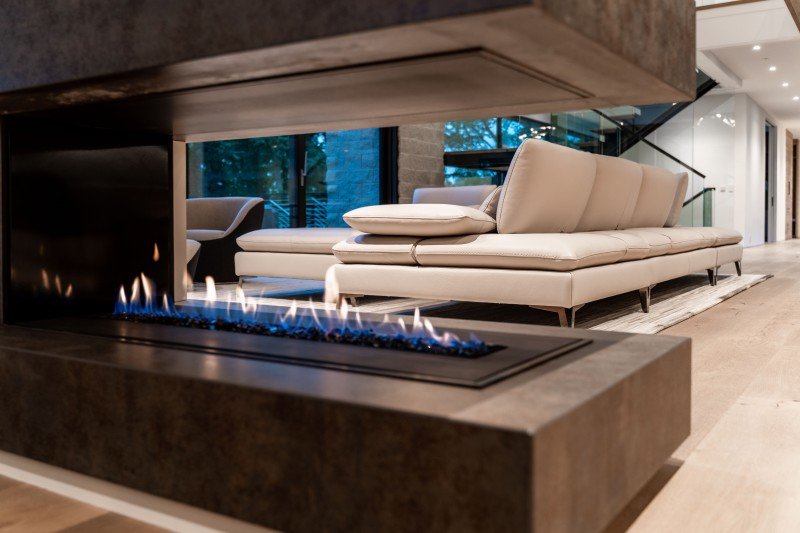fireplaces6717
About fireplaces6717
See What Fireplaces And Stoves Tricks The Celebs Are Making Use Of
The Comprehensive Guide to Fireplaces and Stoves
Fireplaces and stoves have been integral to human civilization for centuries, working as a source of heat, light, and comfort. These devices are available in different kinds and have evolved for many years, catering to varied choices and technological improvements. This short article provides a helpful overview of fireplaces and stoves, highlighting their types, advantages, maintenance suggestions, and installation factors to consider.
Kinds of Fireplaces
The world of fireplaces is abundant and varied. Here are the most common types:

-
Wood-Burning Fireplaces:
- Traditional and lovely.
- Requires seasoned wood and routine maintenance.
- Produces an enjoyable scent and crackling sound.
-
Gas Fireplaces:
- Offer benefit and ease of use.
- Readily available in vented and vent-free options.
- More efficient and cleaner than wood-burning alternatives.
-
Electric Fireplaces:
- Provide atmosphere without the requirement for a chimney.
- User-friendly with push-button control options.
- Can be used as an additional heat source.
-
Pellet Stoves:
- Use compressed wood pellets as fuel.
- Highly efficient and ecologically friendly.
- Typically geared up with thermostats for temperature level control.
-
Ethanol Fireplaces:
- Utilize bioethanol fuel, making them portable.
- Do not need venting, which enables flexible placement.
- Produce a reasonable flame with minimal smoke.
-
Outdoor Fireplaces:
- Designed for outdoor settings; can be wood or gas-burning.
- Great for amusing and enhancing yard aesthetic appeals.
- Frequently built from stone, brick, or metal.
Advantages of Fireplaces and Stoves
Integrating a fireplace or range into a home offers various benefits:
- Aesthetic Appeal: Fireplaces function as striking focal points in any room, including warmth and character to home decoration.
- Increased Property Value: Homes with practical fireplaces tend to have greater resale worths.
- Energy Efficiency: Modern fireplaces and stoves are designed to be more energy-efficient, which can result in reduced heating costs.
- Backup Heating Source: In case of power failures, wood-burning and gas fireplaces can act as necessary heating sources.
- Versatile Heating Solutions: Different types of fireplaces cater to various heating needs and lifestyles, from comfortable ambiance to efficient heating.
| Kind of Fireplace/Stove | Fuel Source | Efficiency Rating | Maintenance Level |
|---|---|---|---|
| Wood-Burning | Wood | Moderate | High |
| Gas | Natural gas/LP | High | Low |
| Electric | Electricity | High | Really Low |
| Pellet | Wood pellets | High | Moderate |
| Ethanol | Bioethanol | Moderate | Low |
| Outdoor | Wood or gas | Moderate | Varies |
Maintenance Tips
Proper upkeep extends the life of fireplaces and stoves, ensuring safety and efficiency. Here are some essential tips:
-
Regular Cleaning:
- Wood-burning fireplaces need to be cleaned up after a complete season of use to eliminate soot and creosote.
- Gas fireplaces require periodic examination of the burner and vents.
-
Routine Inspections:
- Have chimney sweeper carry out annual assessments to identify obstructions or structural damage.
- Examine the seals and gaskets on gas units to prevent leakages.
-
Fire Safety:
- Install smoke and carbon monoxide gas detectors in homes with fireplaces or stoves.
- Keep a fire extinguisher near the fireplace or range for emergencies.
-
Usage Quality Fuel:
- For wood-burning units, constantly use seasoned wood; avoid dealt with or painted wood.
- When using pellets, ensure they are stored effectively to prevent moisture absorption.
-
Handle Airflow:
- Keep vents and ducts clear to promote efficient ventilation and airflow.
- Think about utilizing glass doors or screens to lessen particles and ash in the living area.
Setup Considerations
Installing a fireplace or range requires careful consideration of a number of aspects:
-
Location:
- Choose a location that permits correct clearance and ventilation.
- Consider the design of your home and the benefit of natural heat distribution.
-
Building Regulations and Permits:
- Check regional policies relating to setups and necessary licenses.
- Engage a professional to ensure compliance with safety requirements.
-
Fuel Type:
- Evaluate your fuel choices based on accessibility, expense, and environmental effect.
- If choosing gas, guarantee existing gas lines can accommodate the new appliance.
-
Ventilation:
- Proper venting is crucial for security and efficiency, specifically for gas and wood-burning systems.
- Speak with an expert to determine the best venting option.
-
Aesthetic Consideration:
- Select a style that matches your home’s interior.
- Consider mantels, surround materials, and colors that match your decor.
Frequently asked questions
What is the best kind of fireplace for heating?
Gas fireplaces are generally more efficient for heating, while wood-burning fireplaces offer more ambient heat.
How typically should I clean my fireplace?
Wood-burning fireplaces need to be cleaned at least as soon as a year, while gas fireplaces require less regular attention depending on usage.
Can I set up a fireplace myself?
While some homeowners may attempt DIY installation, it is recommended to employ a professional to make sure safety and compliance with building regulations.
Are electric fireplaces efficient?
Yes, electric fireplaces are very efficient and can work as reliable additional heating sources, especially in smaller sized spaces.
What is the life expectancy of a fireplace?
The lifespan of a fireplace varies depending on the product, type, and upkeep; however, a properly maintained wood-burning fireplace can last over 30 years.
Fireplaces and stoves stay timeless features in homes, providing warmth and atmosphere. Understanding the different types, benefits, and upkeep requirements can help homeowners make notified decisions about installation and care. With mindful preparation and routine upkeep, these home appliances can enhance both the comfort and value of a home for several years to come.
No listing found.
